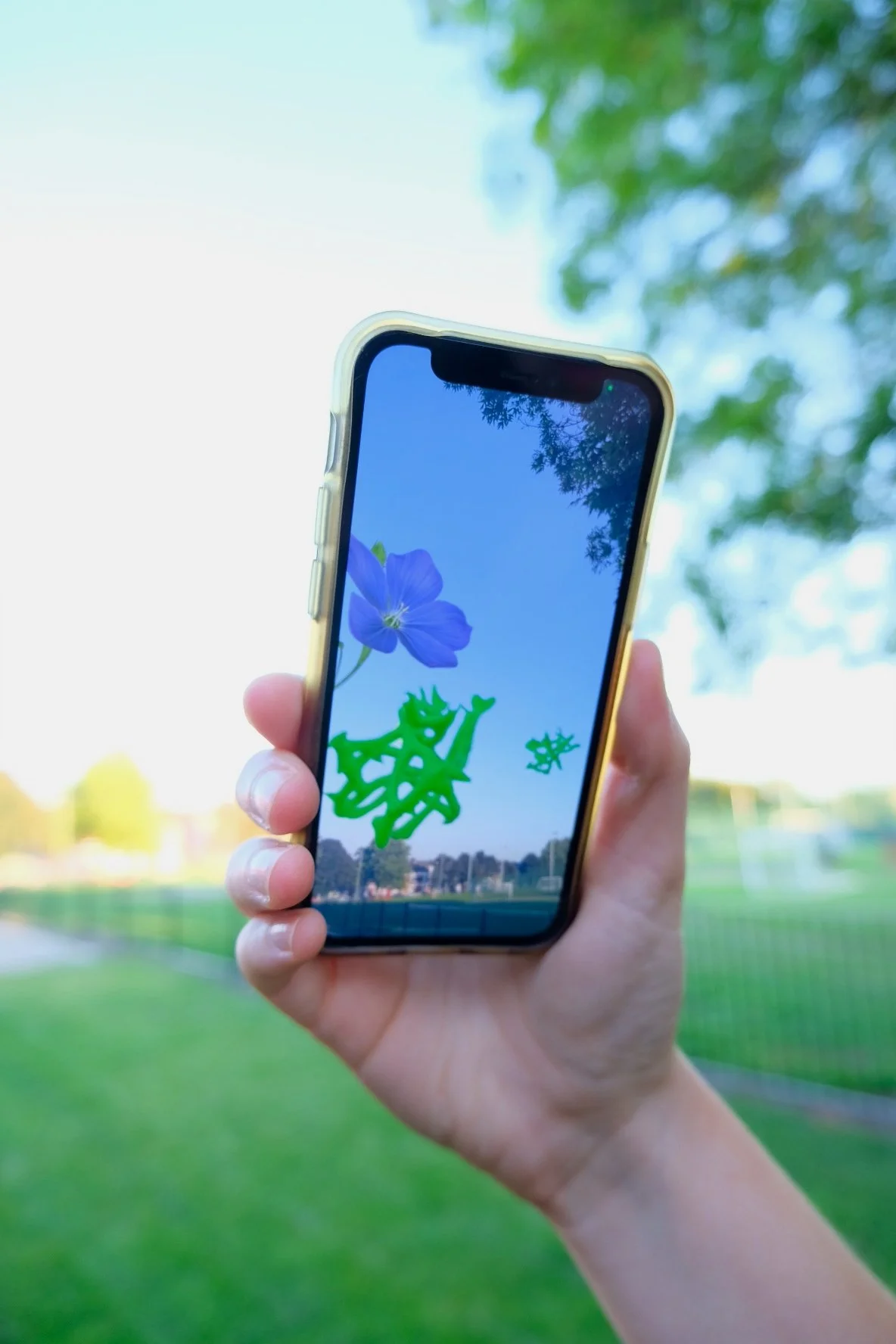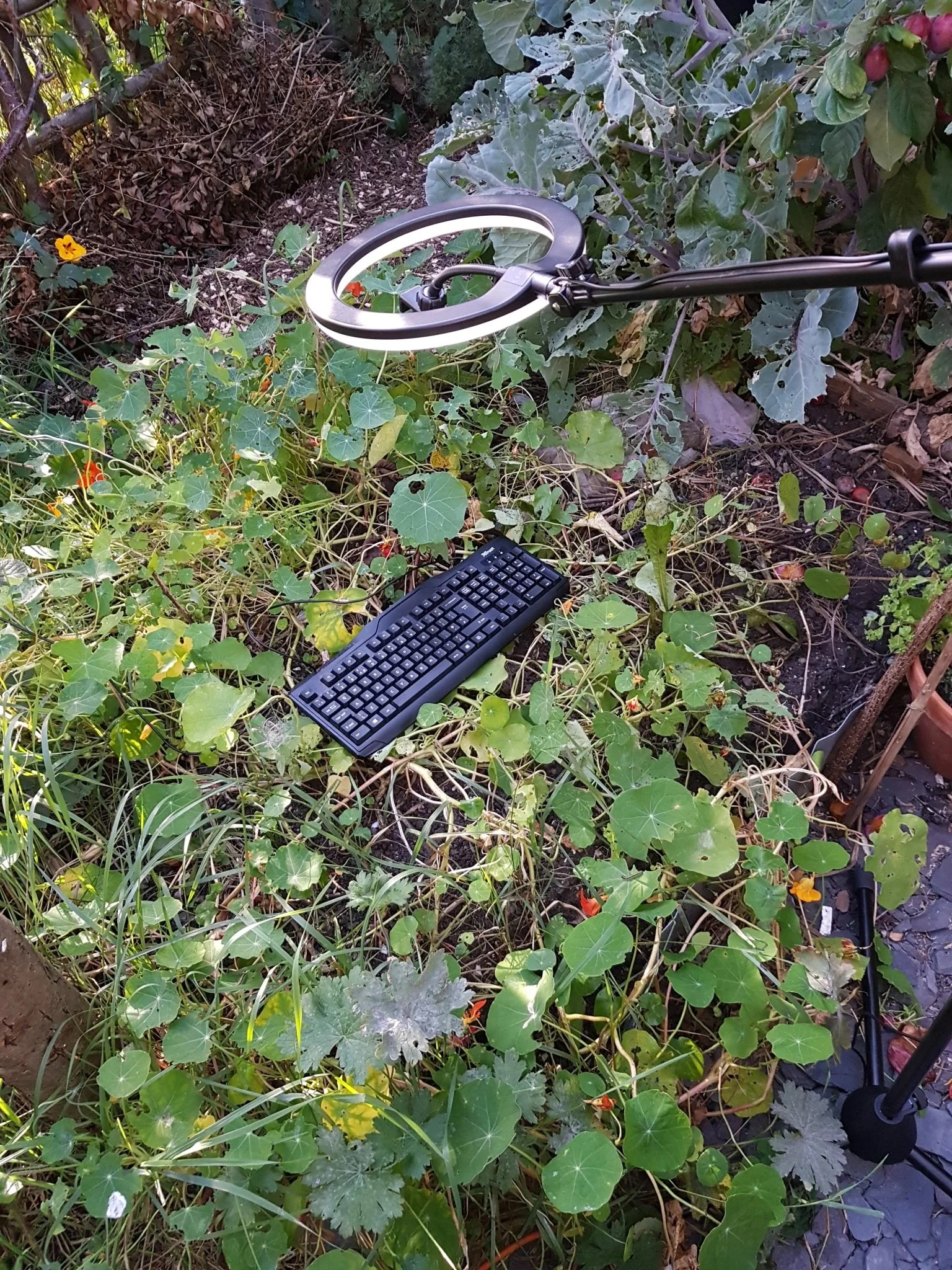



Between the Winds, Amongst the Roots:
Bio-Sensing the City
6. – 13.11.2025, daily on weekdays at 10:00-12:00, 13:00-16:00, 18:00-22:00
LED Façade outdoor screen, SODA building, 14 Higher Chatham St, Manchester, M15 6ED
Artists: Gregory Herbert, Shelly Knotts.
Curator: Polina Chizhova-Wright.
The exhibition “Between the Winds, Amongst the Roots: Bio-Sensing the City” explores what we can learn about cities from natural data. Drawing from the concept of “Planetary Intelligence” proposed by James Bridle, the selected works collaborate with lichens and soil through durational and situated observation, utilising natural and technological sensors as ways of collating knowledge from non-human city dwellers.
Techno-centric approaches tend to promise a greener future thanks to the use of new technologies, yet conversely technology is becoming one of the biggest drivers of extractive practices, from resource usage to energy consumption and waste generation. “Between the Winds, Amongst the Roots: Bio-Sensing the City” explores other ways of relating technological practices to the natural environment. On the one hand, “Winnowing Phase” by Gregory Herbert presents a collaborative approach with both communities and the natural environment, where lichens replace device-based sensors to understand pollution levels in the environment. On the other hand, “EarthCycles” by Shelly Knotts explores the sensing knowledge contained in a patch of soil in a city garden through permacomputing, a practice that embraces a low-energy approach to promote a more sustainable use of computing.
Together, the works articulate alternative propositions for the “smart” city, which emphasise the interconnectivity between humans and the environment and foster a more balanced relation between natural and technological ways of knowing.
Presented on the LED Façade of the School of Digital Arts (SODA), “Between the Winds and Amongst the Roots: Bio-Sensing the City” takes place in the public realm, inviting the passers-by to rethink the role of human and non-human communities in urban spaces, extending the conceptual framework of the city.
With thanks to Dr Gulsen Bal, Dr Richard Morton and LUDeC.
Gregory Herbert
Winnowing Phase
2025 edit
‘Winnowing Phase’ was originally commissioned by Rule of Threes to explore the link between lichens and air quality in Bootle, Liverpool. Over a six-month period, artist Gregory Herbert worked with Dr. Ivan Gee (Principal Lecturer in Public Health, LJMU) and local community groups to respond to participants’ concerns about air quality as an invisible yet pressing threat. ‘Winnowing Phase’ seeks to render the unseen visible.
The project’s particle movements were developed in collaboration with artist Maria Malone, who translated words associated with shifting air qualities into a series of choreographed gestures. These movements were then captured and converted into particles, each corresponding to real air quality data. For its latest iteration, Gregory Herbert has adapted the work to correspond to Manchester's air quality data over the previous month.
Shelly Knotts
EarthCycles
2025 edit
EarthCycles uses a small dataset continuously collected in an urban garden to generate video loops. The data is collected using sensors and a Raspberry Pi in the garden, including soil temperature and moisture, ambient light, CO2 levels and soil nutrient levels. EarthCycles attempts to apply some of the principles of permacomputing, using lightweight/low energy technology where possible. Permacomputing invites us to ‘radically rethink computational culture’ by e.g. reducing scale, complexity and dependencies and improve efficiencies to reduce resource usage with a view to move towards more sustainable and ecological computing practices.
By considering the interconnections between the earth, technology and human activity, EarthCycles draws attention to the environmental impact of computing and our active participation in this relationship.




